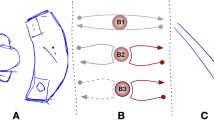Abstract
It is widely acknowledged that the safe and efficient supervisory control of complex dynamic systems requires that human operators are capable of checking the state of the controlled system against given performance criteria. In addition, it is important to consider how changes in the state of the controlled system and its environment influence the control situation: the possibility of bringing about system state changes by performing control actions on the controlled system (the control possibilities), and the requirements for bringing about appropriate state changes in the controlled system (the control requirements). This paper addresses fundamental problems related to the design of human-machine systems that can track changes in control situations. Based on a theoretical analysis of control actions, a generic structure is proposed for control situations. The issues of how to specify control situations and how to derive changes in the control situation, based on a representation of the work domain, are also addressed, using examples.





Similar content being viewed by others
Notes
The specification of the division between doing and bringing about aspects of control actions is relative and could have been defined differently. For example, one could have reserved the doing aspect for the manipulation of controls on the interface of the human-machine system, and the bringing about aspect for the consequent state change induced by actuators. The main reason for upholding the proposed division between doing and bringing about is that it fits with the conventional distinction between the controlling system and the controlled system.
See Chalmers et al (2001) for a work domain analysis of shipboard command and control.
Disclaimer: at present, only the ship’s motion in the horizontal plane is included. Consequently, roll, pitch and heave are not considered in this paper.
Note that the distinction between kinematics and dynamics found in classical mechanics is preserved in the work domain means-end abstraction levels given in Fig. 5. The level of ship movement is concerned exclusively with the motion of the ship (kinematics) while the level below is concerned with the forces (mechanisms) that shape the motion of the ship (dynamics).
(Q1 qprop+ Q2) expresses that Q1 is qualitative proportional to Q2, and (Q3 qprop− Q4) expresses that Q3 is inversely qualitative proportional to Q4. If a quantity Q1 is qualitative proportional to another quantity Q2, it means that there is a functional relationship between Q1 and Q2, and that Q1 increases monotonically in its dependence on Q2 (inversely qualitative proportionalities are defined similarly, with the function decreasing monotonically) (Forbus 1984)
References
Brix J (1993) Manoeuvering technical manual. Seehafen Verlag, Hamburg
Bunge M (1959) Causality: the place of the causal principle in modern science. Harvard University Press, Cambridge
Chalmers BA, Burns CM, Bryant DJ (2001) Work domain modeling to support shipboard command and control. In: 6th Int Command and Control Research and Technology Symp, US Naval Academy, Annapolis, MD, 19–21 June 2001
Forbus KD (1984) Qualitative process theory. Artif Intell 24:85–168
Furukawa H, Inagaki T (1999) Situation-adaptive interface based on abstraction hierarchies with an updating mechanism for maintaining situation awareness of plant operators. IEEE SMC ‘99 Conf Proc Syst Man Cybern 3:693–698
Harré R (1970) The principles of scientific thinking. Macmillan, London
Khalil CJ, Alty JL (2000) The architecture of the AMEBICA agent based adaptive process control interface. In: Alty JL (ed) Proc 20th Eur Annu Conf Human Decision Making and Manual Control. Group D, UK, pp 156–167 (ISBN 1-874152-08-X)
Petersen J, Nielsen M (2001) Analyzing maritime work domains. In: Onken R (ed) Proc 8th Conf Cognitive Science Approaches to Process Control. Deutsche Gesellschaft für Luft- und Raumfahrt, Lilienthal-Oberth e.V. Bonn, pp 221–230
Rasmussen J (1986) Information processing and human–machine interaction. An approach to cognitive engineering. Elsevier, Amsterdam
Simonsen CD (2000) Rudder, propeller and hull interaction by RANS. PhD Thesis, Department of Naval Architecture and Offshore Engineering, Technical University of Denmark, Lyngby, Denmark (ISBN 87-89502-33-7)
Vicente KJ (1999) Cognitive work analysis: toward safe, productive, and healthy computer-based work. Lawrence Erlbaum Associates, Mahwah, NJ
Vicente KJ, Rasmussen J (1992) Ecological interface design: theoretical foundations. IEEE T Syst Man Cyb 22:589–606
Von Wright GH (1971) Explanation and understanding. Cornell University Press, Ithaca, NY
Woods DD (1991) The cognitive engineering of problem representations. In: Weir GRS, Alty JL (eds) Human–Computer interaction and complex systems. Academic, London, pp 169–188
Woods DD, Roth EM (1988) Cognitive systems engineering. In: Helander M (ed) Handbook of human–computer interaction. Elsevier, North-Holland, pp 3–43
Woods DD, Patterson ES, Roth EM (2002) Can we ever escape from data overload? A cognitive systems diagnosis. Cogn Technol Work 4:22–36
Acknowledgements
This work is funded by the Danish National Research Foundation, Center for Human-Machine Interaction.
Author information
Authors and Affiliations
Corresponding author
Rights and permissions
About this article
Cite this article
Petersen, J. Control situations in supervisory control. Cogn Tech Work 6, 266–274 (2004). https://doi.org/10.1007/s10111-004-0164-0
Received:
Accepted:
Published:
Issue Date:
DOI: https://doi.org/10.1007/s10111-004-0164-0




